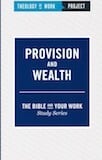A Review of Barbies at Communion and Other Poems
Blog / Produced by The High Calling
For the last several weeks, we have been pleased to partner with the Englewood Review of Books to bring you some fine book reviews. We are delighted to feature some of the members of our community whose work Englewood has highlighted. Today we feature Barbies at Communion and Other Poems by Marcus Goodyear. Marcus is a columnist for Books and Culture and also is our Senior Editor here at The High Calling.
What strikes the reader most about Marcus Goodyear’s poetry is the immediate action of the poetry. The action is simultaneous with the writing, as if Goodyear was dictating the present in lines like a sportscaster gives a play-by-play on a baseball game. The effect of Goodyear’s poetry is not immediately deep or penetrating but matter-of-fact, a pronouncement of ordinary life in poetic lines.
This lack of impact is Goodyear’s modus operandi as he seeks to find meaning in the commonplace and mundane. If anything, the poetry in this collection testifies to the fact that anything, and I mean anything, can become sharp and fragrant with meaning when in the hands of a poet.
In order to capture the commonplace in his poetry Goodyear must deconstruct the sacramental into its common elements. He strips away the layers of meaning from figures of Christ and the Eucharist, leaving only “saltless crackers / and shots of grape juice” along with “Jesuses in the attic / after Christmas.” Goodyear removes the metaphorical in order to let the literal stand naked before us, and in a twist of his poetic prowess, he uses his steady syntax and phrasing to build up an image from the deconstructed literal. This is most evident in the titles of his poems, which give direction to the meaning that Goodyear delivers in his poetry of ordinary life.
Goodyear can accomplish this poetic game of stripping down to the literal and building up again because of his clever use of conceit. The reader (this review included) can so easily be lulled into the normalcy of Goodyear’s images, only to discover that in his recounting of a seemingly dull event there is a deep beauty and majesty to the everyday and ordinary. Goodyear showcases this deft skill in poems such as “Drought on the Open Road,” in which he writes:
Once the herd was so thirsty
they ate the burn right off
the interstate shoulder, two bites
from asphalt and cars flying
75 miles to nowhere.
Heat paralyzed cows
never look up.
In the singular image, which Goodyear commands so well, the poet offers up a commonplace moment that hinges on so much. In the isolated event of cows inching ever closer to the highway Goodyear pushes the reader to contemplate the chain reactions caused by a singular event. In essence, Goodyear’s simplicity of poetry is a conscious statement to the irreducible complexity of life, that complex weather systems can cause a drought that eventually leads a herd of cattle into the dangers lurking on an isolated patch of Texas highway.
The power of Goodyear’s poetry is thus in his ability to hold so much back, to be so reserved as a poet that he lets the multiple meanings of words burst out from the pages. In essence, he lets the poetry, and not the poet do the work. He does not seek to answer the mystery as other poets do, but stays in the realm of plain sight and plain poetry. As he himself writes, “Where the mystery is / too great, give us flesh.”
The Englewood Review of Books is based out of Englewood Christian Church in Indianapolis and publishes reviews for a socially-engaged Christian audience in two formats: a free online edition (weekly) and a print edition (quarterly). Their hope is to get people reading and discussing books in their church communities, reflecting on how we're called into God's work of reconciling all creation. For another view on Englewood, check out this delightful podcast with John Wilson at Books & Culture.
Photo by Claire Burge, used with permission. Post by Thomas Turner.




